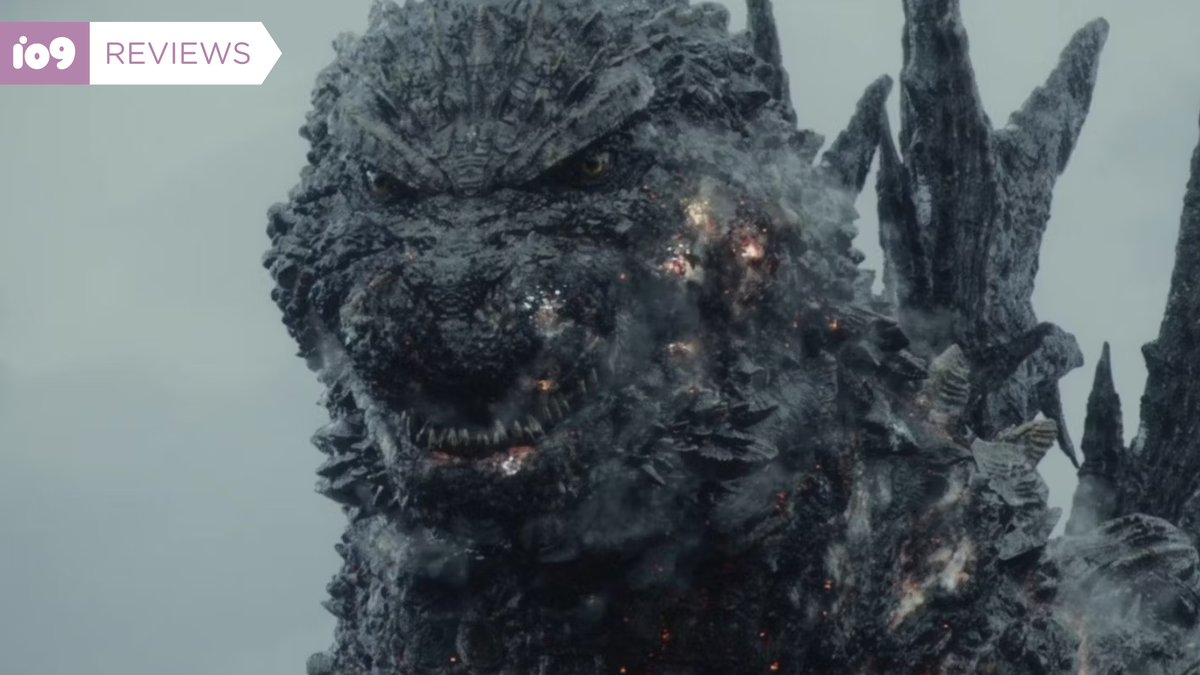Godzilla, and Godzilla movies, has been many things over the past 69 years—the King of All Monsters has changed in character as often as he’s changed in design, from horrifying force of nature to heroic defender of the Earth. It’s fitting then, that his latest incarnation refocuses on Godzilla in some ways, and his human foils in others, to create a throwback that feels invigoratingly fresh.
Reservation Dogs | First Fandoms
That comes in Takashi Yamazaki’s remarkable Godzilla Minus One. Part reboot, part loose extrapolation of the legendary kaiju’s original roots in the iconic 1954 movie, this time we are transported to the immediate aftermath of World War II, as Japan finds itself dealing with rebuilding in the wake of the devastating end to the war only to be confronted with the nuclear terror of Godzilla’s emergence. Focusing on a young man named Koichi Shikishima (Ryunosuke Kamiki)—a kamikaze pilot who returns home after the war’s end, burdening the regrets of having faked an engine malfunction to avoid going into battle—Godzilla Minus One shines in letting itself rest on Kamiki’s performance and Koichi as its lens.
Screenshot: Toho
Human drama has always been the core of any great Godzilla movie, but more often than not, those humans are movers and shakers, government or military forces, larger than life entities who combat the threat of Godzilla through administrative bureaucracy or military might. Minus One, presenting us a harsh reality where Japan has no willing allies to come to its aid, a battered people, an uncaring government and dwindled military assets, spends its first act building up almost a sense of dread in its focus on the human spirit. As we watch Koichi and his neighbors pick through the wreckage of firebombed Tokyo to rebuild their homes and their lives—first distrustful of each other but increasingly more united and resilient—there is a tension inherent to knowing that this is a Godzilla movie: these people, these characters we come to admire through an intensely focused perspective, are building proverbial houses of cards out of the ashes.
So when Godzilla comes, Minus One never shies away from either the terror that such a threat should be, nor the political allegory of Godzilla’s representation of nuclear anxiety—one all-the-more heightened by its post-war setting. Yamazaki’s eye for special effects here is incredible: Godzilla has a presence in Minus One that feels real, and in a wonderful nod to its retro-aesthetic, a texture and stylization that feels like part living beast, part man in a suit. And yet, he is indeed all-terrifying, and seemingly all-unstoppable when all our heroes have to stop him is a flotilla of fishing boats and past-decommissioning mines. He is, pointedly as well, a nuclear threat: although Godzilla’s rise is built up throughout the early acts of the film, in his first true attack on Japanese soil he carries the weight of total nuclear destruction, leveling city blocks in an awesome, horrifying blast from his heat ray that leaves nothing but devastation and the tell-tale mushroom cloud in its wake. If Shin Godzilla, Toho’s last kaiju film and now nearly a decade behind us, made a Godzilla that was alien in its horror, Minus One’s is a fear grounded in our reality, one that is keenly known to the context of its characters, and to its audience.
Screenshot: Toho
Just as cleverly as Minus One both builds up its human elements and its stunning take on Godzilla himself, when it comes time in the final act for Koichi and the community he has built around him—one we have seen grow throughout the film—to be the immovable object against an unstoppable force, Yamazaki beautifully dovetails all the threads he’s laid down to deliver a climax that evokes Godzilla films at their most classic: a story of high melodrama and terror, but one intensely focused on, and enamored by, the capability of the human spirit—to stand up, to help each other, to love. But that is also the underpinning of its real message. Minus One isn’t a movie about Japan as a nation state reacting to Godzilla, and what the imagery of the King of all Kaiju represents. It is a movie about people—the communities we build in our lives as individuals, what we value and what we keep when there is nothing else willing to support us—facing this titanic, unflinching threat. Even as Minus One excels in establishing the horror of its titular antagonist through remarkable effects work and grippingly framed action, it is ultimately a movie that is not about its monstrous headliner, but the hope in its human characters.
That Minus One excels in this balance between the human and the monstrous is a triumph all of it its own. But that it does so as well by so masterfully using its period setting to make its political allegories clear and explicit to its audience—to provide them the spectacle of its shock and awe, the joy of its human spirit, but also the bitter pill of its powerful political message—makes it more than just one of Godzilla’s best cinematic appearances ever, but one of the year’s best movies full stop.
Screenshot: Toho
Godzilla Minus One hits U.S. theaters widely from December 1, with special early previews beginning next week on November 29.
Want more io9 news? Check out when to expect the latest Marvel, Star Wars, and Star Trek releases, what’s next for the DC Universe on film and TV, and everything you need to know about the future of Doctor Who.
